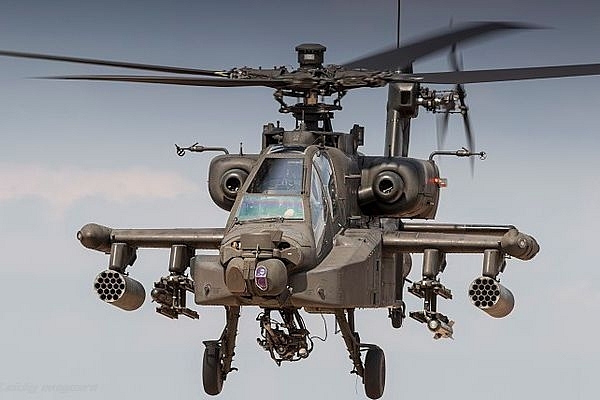
IAF’s Apache Choppers Need To Be Integrated With Ground Forces For Better Operational Capabilities: Experts
With 22 Apache helicopters set to join the Indian Air Force (IAF) by March 2020, defence experts have raised the need for integrating the multi-role combat choppers with ground forces for better operational capabilities, logistics and training.
Eight units of the US-made combat helicopter Apache AH64E (I) -- where 'I' stands for India-specific enhancements -- were inducted into the 25 Squadron of the IAF in Pathankot in September. India has entered into a multi-billion contract with US aviation major Boeing in September 2015 for acquiring 22 Apache choppers in flyaway condition.
Subsequently, the central government signed another contract worth Rs 4,168 crore for acquiring six Apache choppers for the Army. The choppers for the IAF are being delivered to India in phases.
"Four additional choppers have subsequently been delivered after the induction of the first batch of eight helicopters into the IAF. Five more choppers will be delivered in December this year. The last installment of five choppers will be delivered in March next year. For the Army, the process of evaluating the six acquisitions is underway," a Boeing spokesperson told IANS.
The choppers, known as 'Tank Killers', provide close air support to armoured formations and ground forces by flying at 'tree-top heights'.
In advanced militaries across the globe, including the US and the UK, the Apache choppers have been inducted into the Army.
"The Apache is meant for armoured battles in scout and attack roles. They have to operate in close co-ordination with and close support of ground defence. The Army Aviation Corps has the expertise to fly choppers. There needs to be complete integration of the choppers with the Army in terms of training as well as command and co-ordination with land forces. It will be easier to develop tactics and doctrine together," retired Lt Gen Deependra Singh Hooda, former Northern Army Commander, told IANS.
Army veterans are of the argument that any equipment is better held with one particular service for better operations, logistics and maintenance. "With two different services, there will be bureaucratic hassles even for training purposes," added Hooda.
However, the IAF maintains that exposure and experience of its fighter pilots is much more superior than the Army as far as aerial combat and warfare is concerned. The IAF has flown combat helicopters including the Mi 8, the Mi 17, the Mi 25 and the Mi 35 in the past which it cites as precedence for acquiring the Apache combat choppers.
"The IAF talks, speaks and walks aerial warfare. It is the lead service provider in aerial warfare. The Army Aviation Corps is very nascent and had been under the control of the IAF for a long time. The air defence and air space of India is controlled and guarded by the IAF. It is not a question of ownership of the choppers. It ultimately depends on the experience and exposure of the parent organization," retired Air Chief Marshal Fali H Major told IANS.
(This story has been published from a wire agency feed without modifications to the text. Only the headline has been changed.)